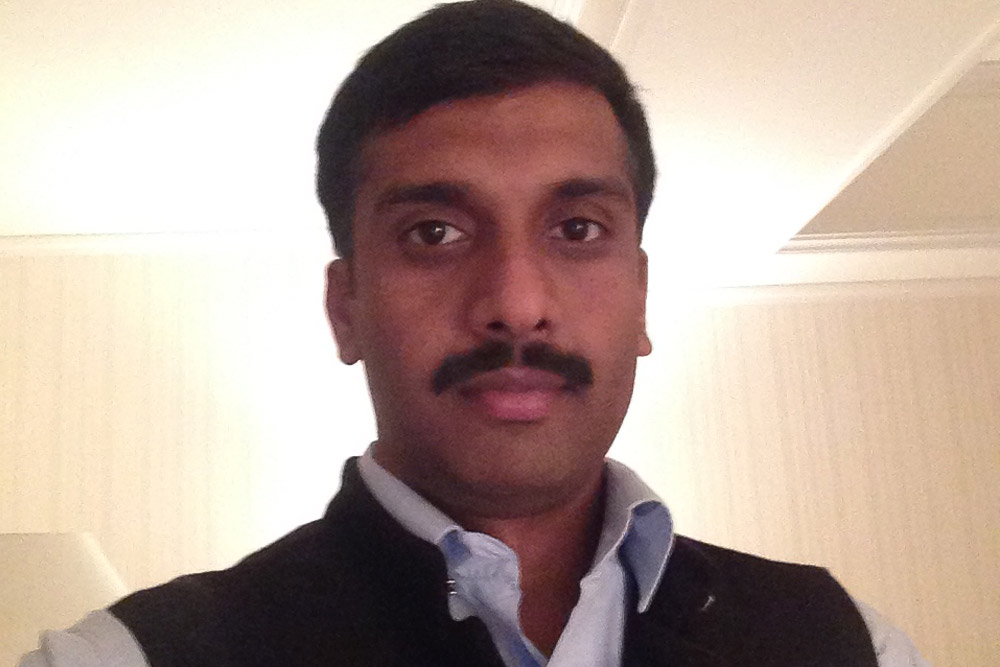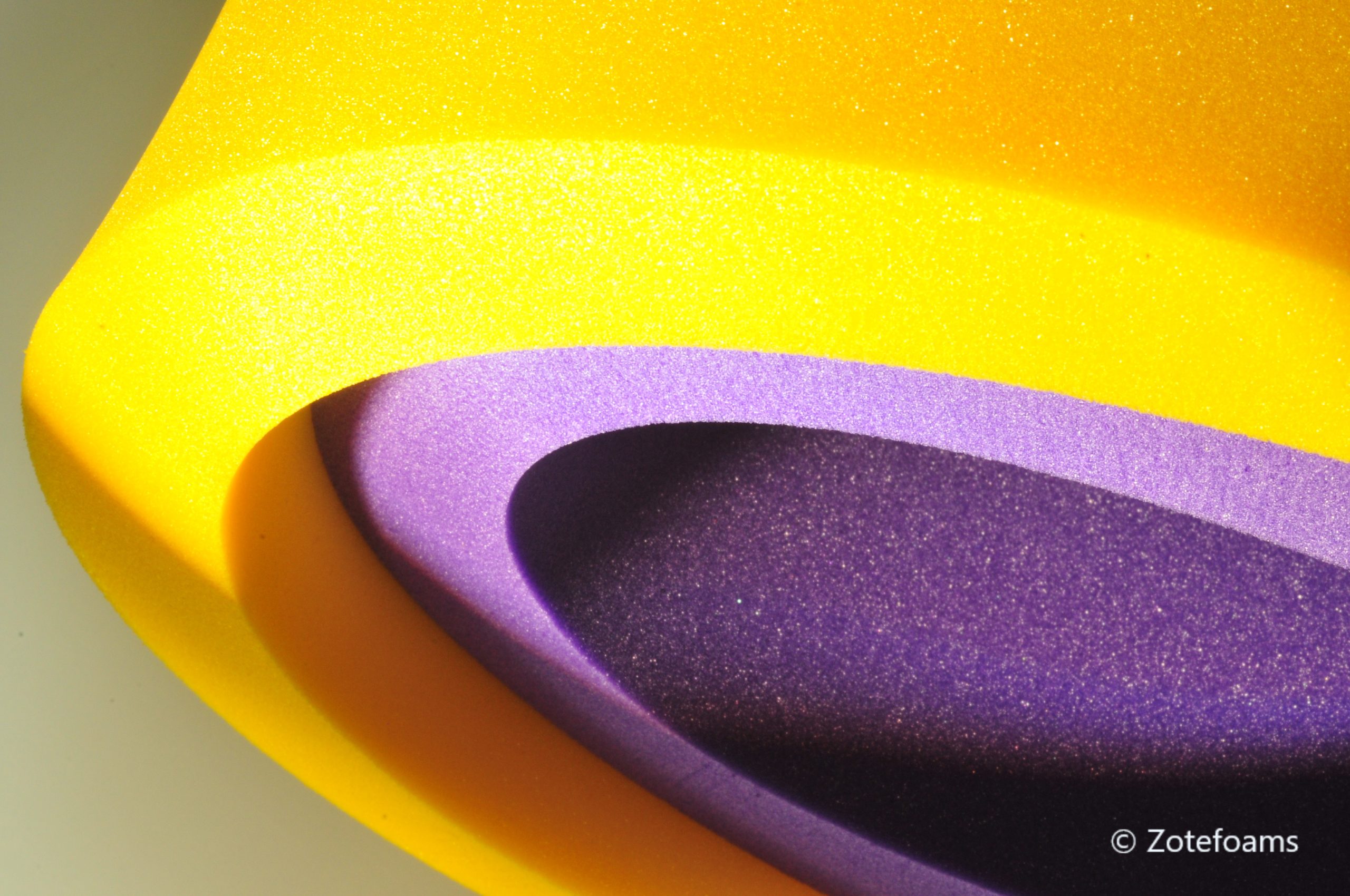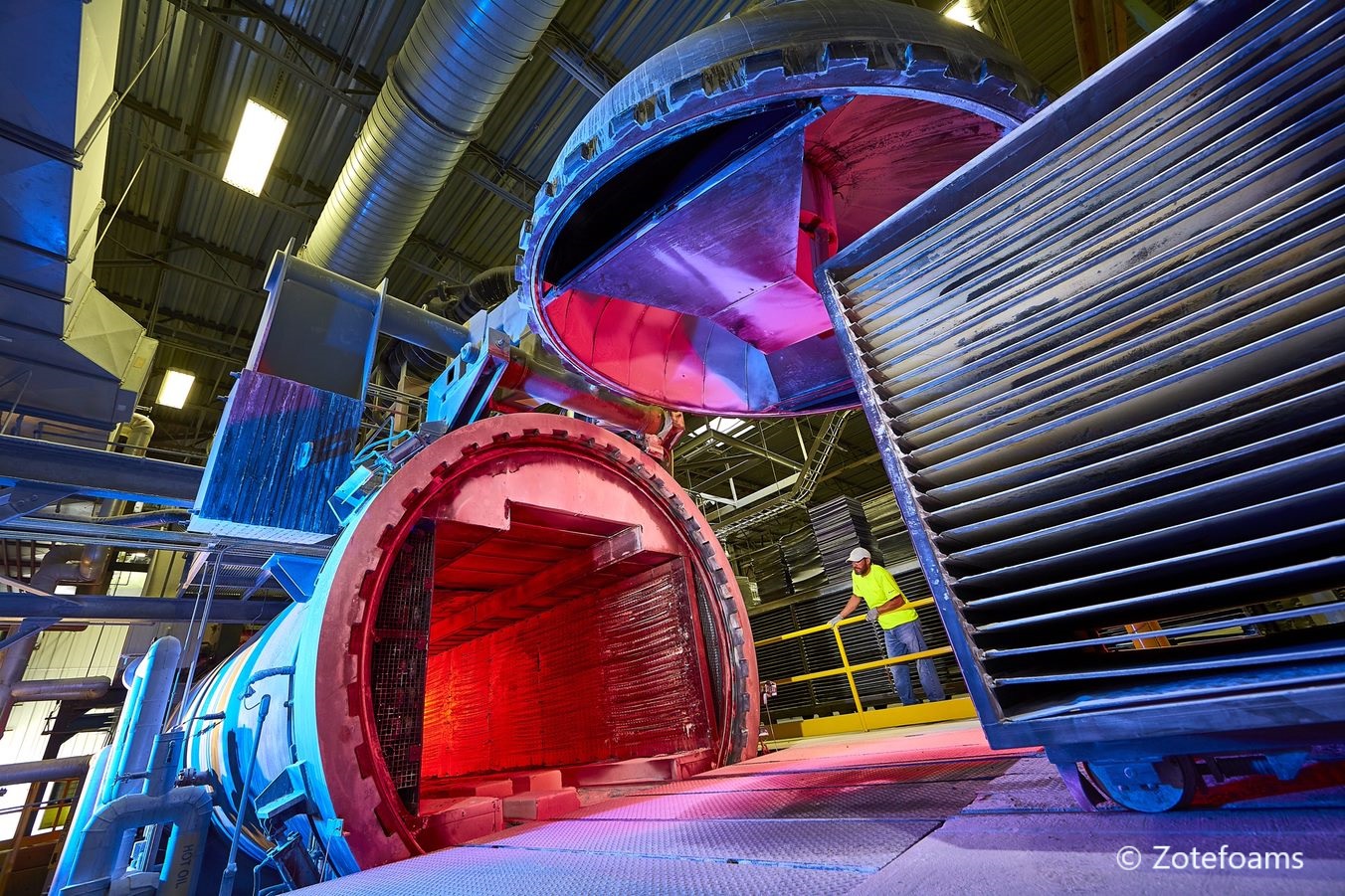Spectrum of solutions thrives with high performing technical foams
by Roshan Sannappa, Director of Business Development & Parva Foam & Packaging Technologies, LLP
From educational toys to yoga mats, aircraft interiors, medical devices, electronic applications, military applications, general purpose packaging and the running shoes used by world-class athletes, technical foams are a critical production component for a huge range of industries. The global market value is correspondingly large – estimates place it as high as USD113 billion in 2019 – and growing at a CAGR approaching 5% according to recent research.

The sheer variety of foam products makes it easy to take the component “foam” for granted without properly appreciating just how much the application influences the choice of grade and properties. Performance-wise, the foam in a yoga mat has a different job to do from the foam that reduces noise and vibration in a top-class automobile, or that forms the moulded trim in an airline’s business-class cabin – or, for that matter, a spacecraft.
This is obvious when you think about it, yet many manufacturers do not sufficiently consider the end use when specifying foam. Often their key criterion is a narrow one – price – rather than broader considerations like application/performance/price. This judgement, intrinsic to the success or otherwise of the application, is very much a product of experience, which we at Parva Foam and Packaging Technologies have gained through more than two years of providing custom products by converting and fabricating foam components and accessories to deliver a spectrum of solutions for the Indian market.
Allied to this, we can also attest to how many customers underestimate the complexity of the decision-making process. Often, they begin by asking the price for “just a sheet of foam” yet end up asking us to quote on the custom-designed, end-to-end foam fabricated solutions that are the core of our business. The revision often happens quickly, based on initial questions about why the foam is needed as we guide them through the considerations.
Limited access
Something else we’ve discovered through these conversations is that the Indian manufacturing industry has not, until recently, had access to all of the high-grade, high-performance foams that are now available – or, if they have, not in the volumes they require. Neither have they been able to draw on the technical support needed to make the best choice of foam related solutions for their application.
This is unfortunate, because demand for technical foams is rising in many markets, driven by factors such as the need to adapt to new legislation and shifting consumer demands that place a premium on sustainability and energy conservation. Meeting these requirements represents new opportunities for the Indian manufacturing industry to source application-specific foam products that naturally command higher margins.
All of which explains why our company has diversified beyond foam conversion and fabrication under the new corporate banner – “Parva Foam & Packaging Technologies” – and are now an authorized and exclusive Indian business partner for the AZOTE® range of polyolefin foams from Zotefoams plc, the world leader in closed cell, crosslinked foams. Quoted on the London Stock Exchange, Zotefoams’ legacy of innovation in cellular materials stretches back to 1921. With an annual turnover exceeding GBP80 million, and a global workforce of over 450 employees, Zotefoams products are used extensively in a host of markets, including automotive, aerospace, product protection, industrial parts, marine, construction, military, medical, and sports and leisure.
Our journey with Zotefoams began in 2013, when we evaluated the Plastazote® LD29 polyethylene foam for one of our medical applications. Plastazote, first introduced in the 1960s, is internationally recognized as the ‘gold standard’ in polyolefin block foams: the product, and others from the Zotefoams range such as Evazote® EVA copolymer foam, proved to be excellent raw materials for our applications, but – in common with others in the manufacturing industries – we regularly struggled to source genuine materials locally. Subsequently our integrity,

commitment and determination to overcome this challenge facing the whole Indian market resulted in an exclusive business partner agreement between Zotefoams and Parva Foam and Packaging Technologies, based at Bengaluru. The rest, as they say, is history.
Three-stage manufacturing process key to quality
What differentiates Zotefoams products from those of its competitors is the unique three stage manufacturing process, which produces high-performance, closed cell, crosslinked foams from common and engineering polymers using temperature, pressure and nitrogen borrowed from the atmosphere. The process is worth briefly describing to vividly demonstrate that these products are not ‘just’ sheets of foam:
• Stage 1 – Extrusion and crosslinking: Polymer and any additives (colours, fire retardants, conductive agents, etc) are extruded into a continuous solid plate. This passes through an oven, which activates the crosslinking process. After cooling, the plate is cut into slabs.
• Stage 2 – Nitrogen saturation: Slabs are loaded into a high-pressure autoclave where the material is heated above its melting point and pressurised with pure nitrogen gas. Over a period of time, the nitrogen gas diffuses into the slabs. Next, a rapid depressurisation destabilises the absorbed nitrogen, nucleating cells in the slab, which is then cooled under pressure, locking the nitrogen in the unexpanded slabs. Operating temperatures reach up to 250oC (482oF) and pressures 675 bar (10,000 psi).

• Stage 3 – Expansion: The nitrogen-charged slabs are loaded into a large, lower-pressure autoclave and, under moderate pressure, heated above their melting point. When the pressure is reduced, the nitrogen expands, creating a larger foam sheet. Because the expansion process is physically unconstrained, the sheets are uniform in each dimension. Operating temperatures reach up to 250oC (482oF) and pressures 17 bar (25 psi).
The combination of the foaming process and the polymer performance delivers properties such as excellent fire resistance, high-temperature stability, toughness and insulation, all of which are prized in a wide range of demanding applications. Other features include ease of fabrication, purity and high chemical resistance. In addition, foams neither absorb or transmit water or water vapour.
Right products, right time
The secure product supply guaranteed through Parva Foams’ and Zotefoams’ new partnership arrangement comes at the right time for the Indian manufacturing industry. I have already described how changes in legislation and consumer expectations are fuelling demand for high-performance foams; to these drivers can be added the boost to domestic producers provided by the ongoing ‘Make in India’ campaign, which is encouraging a steady ‘insourcing’ of production from countries such as China. This process has been given further impetus by increased scrutiny of supply chain stability in the wake of the COVID-19 pandemic.
Add all these factors together and there are big opportunities for our customers in many industries. The Indian electronics market, for example – a particular growth target for ‘Make in India’ – may be relatively small in global terms, but it has grown from USD29 billion in 2014 to USD70 billion in 2019 and, it is believed, has the potential to account for 30% of global electronics manufacturing within five years. Zotefoams’ AZOTE foams are widely used for specific product protection applications, such as preventing electrostatic discharge (ESD).
The medical device sector, regarded as a ‘Sunrise Sector’ ‘by Make in India’, is already the largest in Asia, and among the Top 30 globally. Here, Plastazote is the most-cited thermoplastic material in medical literature. In automotive manufacturing, where the medium-term growth prospects are good, thanks to the adoption of low-emission B6 engine technology, AZOTE foams are widely specified for their ease of fabrication and purity, with a minimal VOC content compared to competitor foams. AZOTE materials have a better performance per unit of density compared to alternatives, offering manufacturers crucial weight- and fuel-saving opportunities before vehicles even hit the road.
Zotefoams shares its excitement about the potential for its AZOTE range of materials in the Indian market by partnering with Parva Foams and Packaging Technologies, who also have strategic plans in place for setting up operations in multiple regions across the country. Similarly, Zotefoams has recently established a sales and service operation in Ahmedabad to support its T-FIT® technical insulation brand. Manufactured from Zotefoams’ ZOTEK® range of high-performance foams, T-FIT presents a breakthrough in insulation for cleanrooms, aseptic and industrial areas in pharma, biotech, semiconductor and food/beverage manufacturing – all high-growth sectors in India. We at Parva Foams are regularly in contact with the T-FIT India team, exchanging ideas that are proving really beneficial to both sides.
Beyond ‘just’ foam
At the beginning of this article, I described how many customers underestimate the complexity of the foam specification process, and how at Parva Foams and Packaging Technologies we use each sales enquiry to educate potential customers about the importance of selecting materials based on the end application. Our message is, “By all means contact us when you think you need ‘just’ a sheet of foam for your development or commercial volumes, but you will discover that we can provide so much more, from guidance in choosing the right foam to a complete solution beyond fabrication and logistics.” In short, we have two goals. The first is to provide the Indian market with access to the most comprehensive range of specialty foams available whilst being integrated with accessories to develop your end solution; the second is to provide the world’s leading foam manufacturer with the right partner presence it deserves, in a market like India with a great potential.